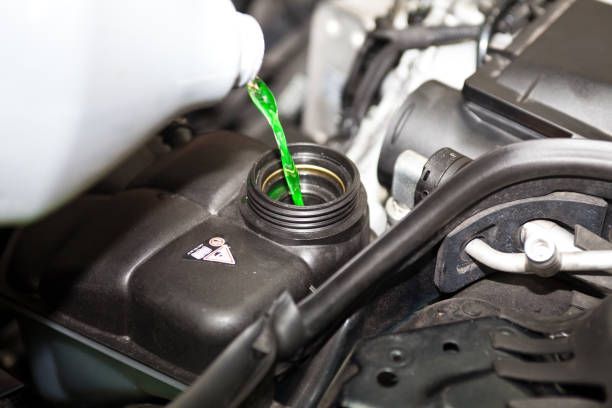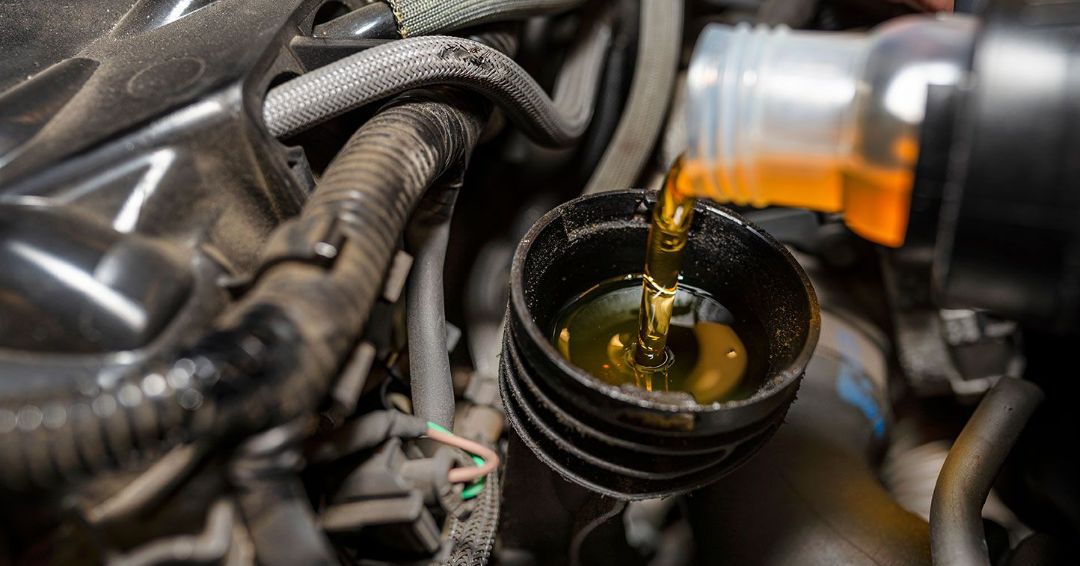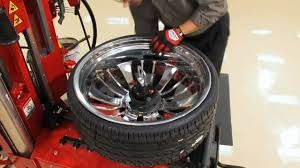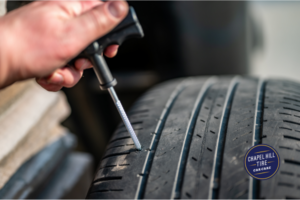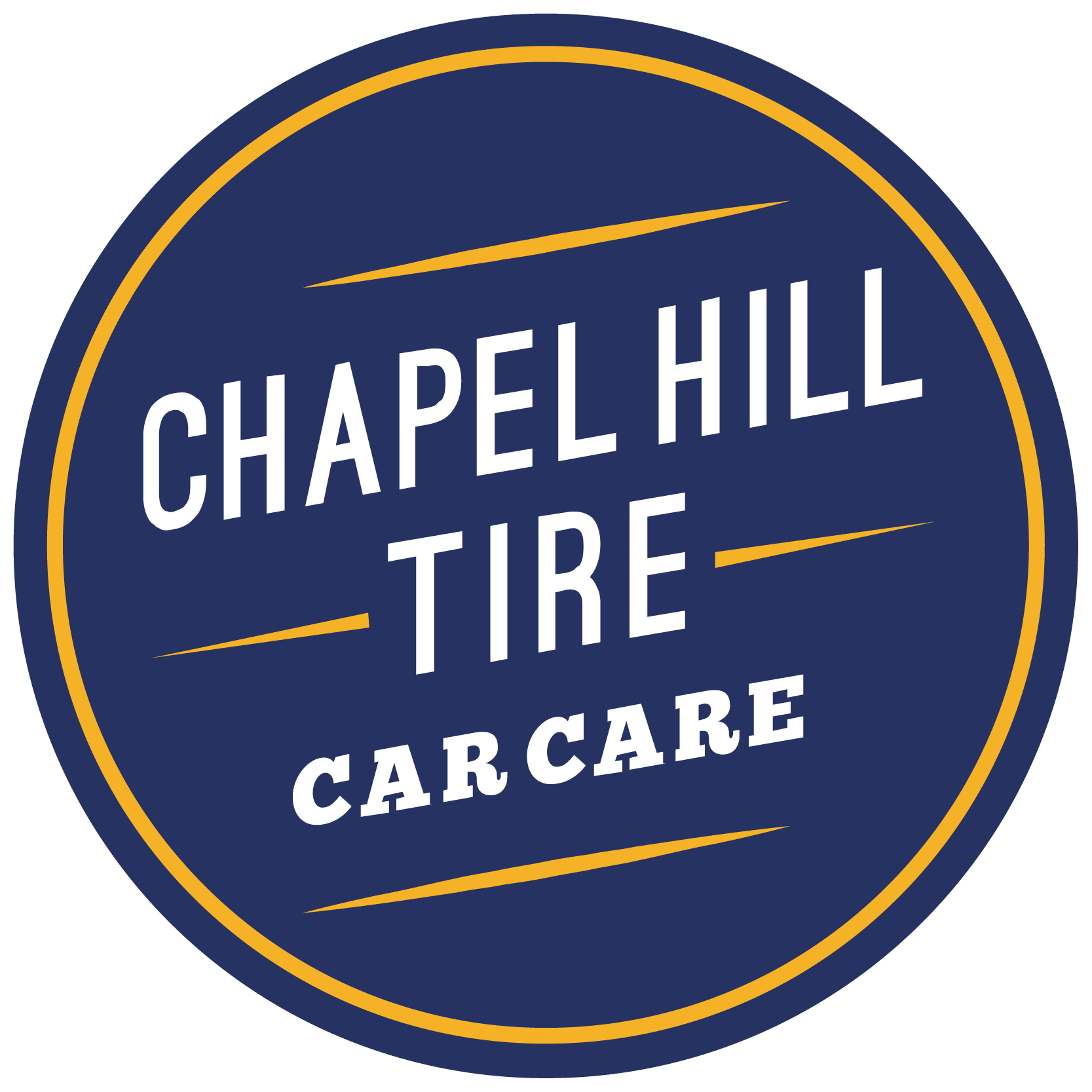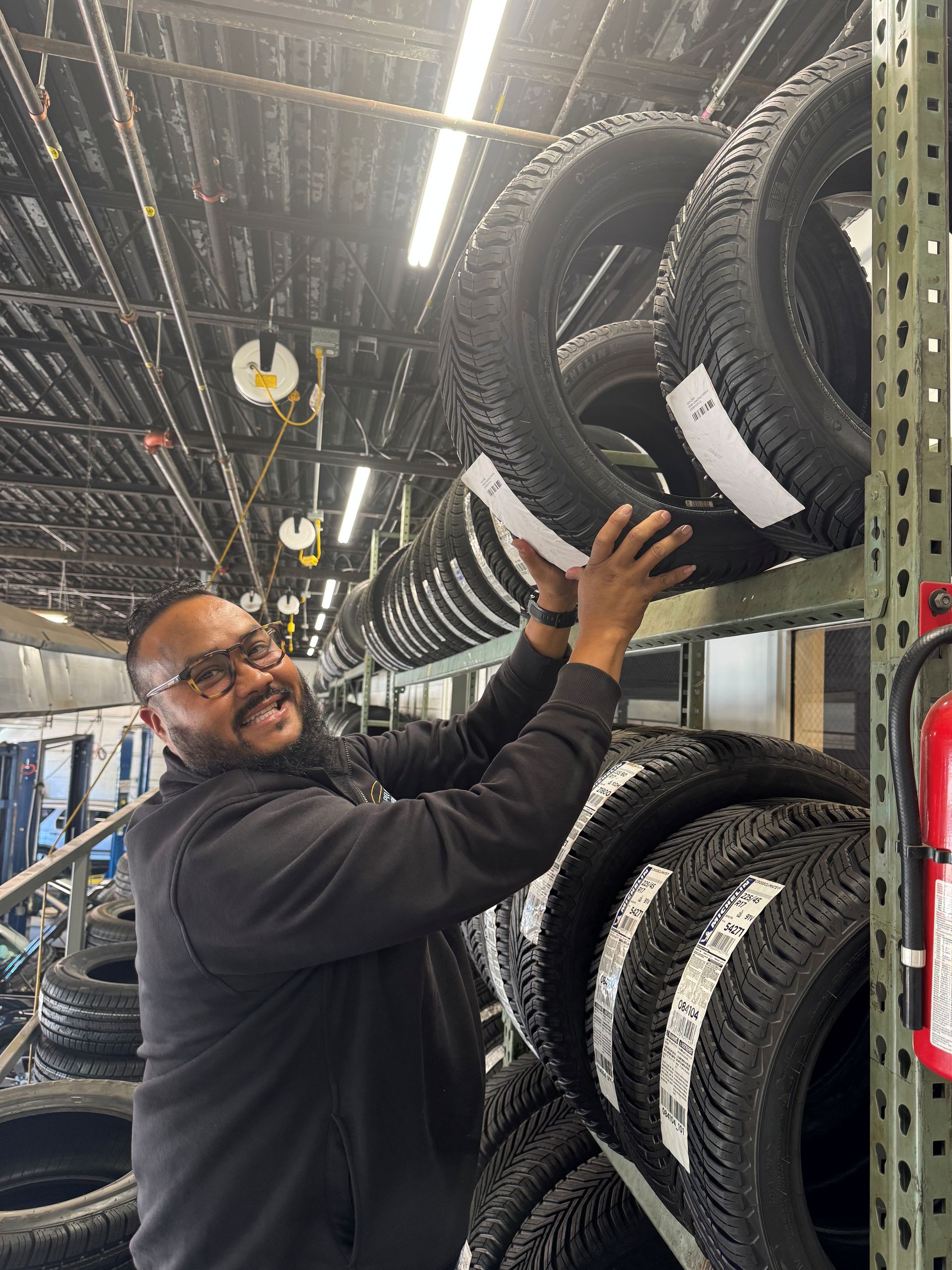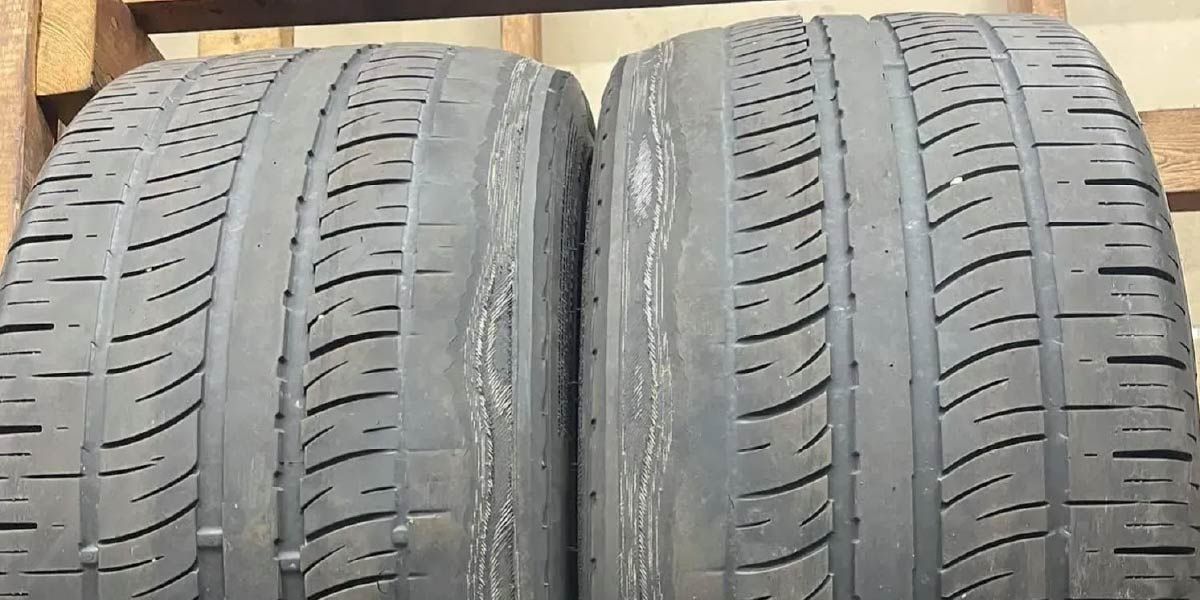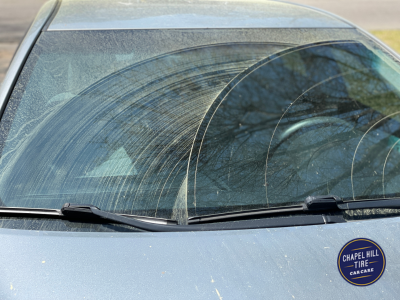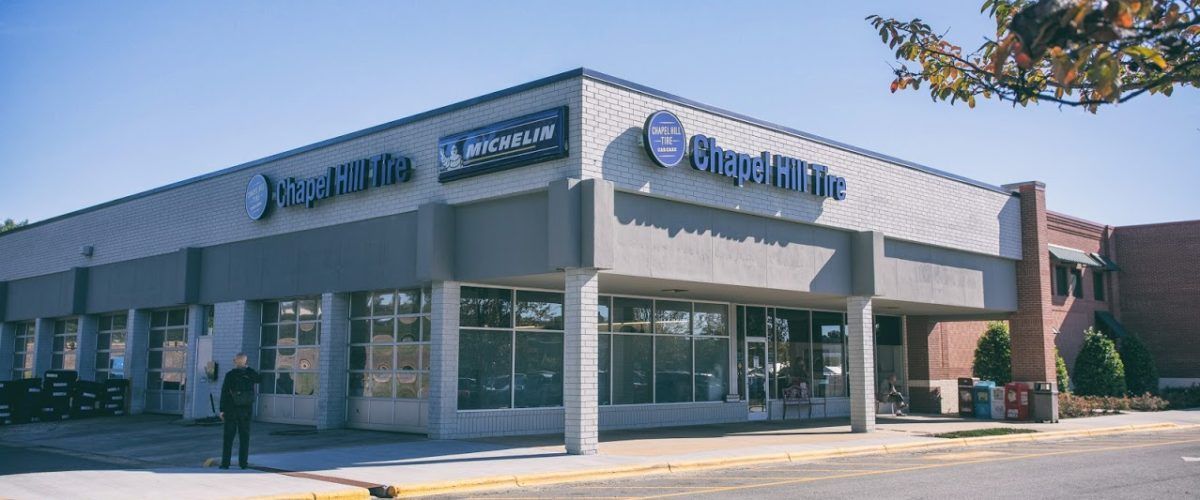Dangerous Signs You May Be Prone to Tire Blowout
Auto Shops Located in: Chapel Hill, Durham, Taleigh, Apex, and Cary North Carolina
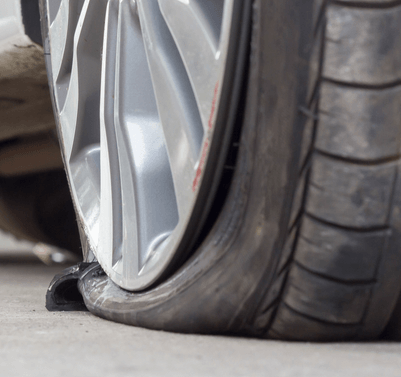
So you’re driving to work or out running errands when one of your tires suddenly gives out. No matter how many years you’ve been driving, this is a scary experience for anyone. It’s completely unexpected and unpredictable—or is it?
Tire blowouts can be caused by numerous factors, including potholes or sharp objects in the road, like nails or shrapnel. But, some blowouts can be prevented with regular car maintenance. Keep reading to find out just what a tire blowout is and the warning signs you should pay attention to in order to keep yourself and other road users safe.
What Is a Tire Blowout?
When one of the vehicle’s tires bursts out of nowhere, and all of its air rapidly escapes, it’s called a “blowout.” Now, the first thing you may think when this frightening situation occurs is that the tire has too much air. Why? Because we tend to associate something bursting with it being overinflated, but that isn’t always the case.
Did you know that underinflation is just as dangerous as overinflation? Whether it’s over or under, an improperly inflated tire will blow out under the right circumstances.
If the tire is underinflated, it will begin to flex and overheat, and during the hotter months – when eggs can be fried on asphalt – a tire without enough air is likely to burst.
As a nation, we use our cars to travel a lot during the summer, transporting our families and luggage to visit relatives and friends. When the tires aren’t inflated correctly, the extra weight and very hot roads are a recipe for disaster.
The 4 Most Common Tire Blowout Warning Signs
Since a blown tire can throw a serious wrench in your plans and even cause an accident, it’s important you know the main warning signs you’re nearing a burst tire. As you try to keep your vehicle and tires in the best shape possible, review the four most common signs you’re at risk of a tire blowout below:
1. Worn Out Tire Tread
When was the last time you checked the treads on your tires? If it’s been a while, you might want to head outside.
The treads are full of bumps and ridges that allow the tire to get a tight grip on the road. If you regularly travel for long periods or have not changed the tires in a while, your tires are likely worn out. This wear can be risky for drivers as more wear means the tire has a weaker grip on the road and is more likely to burst.
Luckily, there’s something you can do to find out if your treads are the right thickness – it’s called the “old penny trick.” Take a penny and stick it into the tread to measure its depth. If the tread doesn’t rise above President Lincoln’s head, it’s time for a new set of tires.
2. Bubbles in the Tires
Bubbles are one of the most common tire defects. The part of the tire affected by this issue is the sidewall, which is made up of several layers of rubber. Sidewalls are not as thick as treads, and an improperly inflated or overheating tire’s wall layers will begin to separate.
When the separation happens, air can easily seep in between the layers of the sidewall. The area around the bubble is then stretched over the air pocket, causing this section of the wall to become thinner. Without warning, this spot can pop and cause a tire blowout.
3. Vibrating Tires
If the tires are vibrating while driving, this is definitely a sign that something is wrong. Instead of ignoring it, pull over as soon as possible and call a mechanic to ensure you don’t have a serious problem on your hands. The wheel may be misaligned or even bent, which can lead to other damages. You could also have a defective tire that is more likely to burst, and you’ll need to replace it with a new one before you can drive safely.
4. Deflated or Overinflated Tires
As we discussed previously, underinflation and overinflation can cause tire blowouts. If you’ve noticed your tires deflating faster than normal or you haven’t checked your tire’s pressure recently, you could have a deflated or overinflated tire. An overinflated tire is usually due to heat or user error where you accidentally put too much air in your tires. Additionally, under-inflated tires can be due to damaged valves or seals, cold weather, or a lack of regular maintenance and tire pressure checks.
Regardless of the cause, deflated and overinflated tires put you at risk of a burst tire. If you haven’t checked your tire pressure in a while, take your vehicle to a mechanic for an inspection.
Choose Chapel Hill Tire for New Tires in the Triangle Area
If you’re looking for new tires near you in Raleigh, Durham, Apex, Carrboro, Chapel Hill, or the surrounding areas, turn to Chapel Hill Tire. Our team can provide several tire services, including rotating, balancing, and replacing tires. We also carry a large inventory of new tires to ensure we can get your vehicle back on the road quickly. Before you schedule an appointment, check out our coupons to get a discount on our already low prices. Don’t spend more time worrying about your tires, and let us help you confidently travel the roads.
Schedule an appointment with Chapel Hill Tire today, and take advantage of our top-quality tire services.
We’ve got all your automotive repair needs covered.
